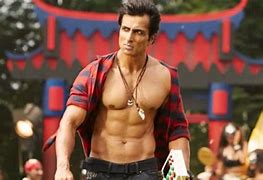World
Obama praises Indian-American kids, extols ‘power of ideas’

Washington: President Barack Obama praised the work of young Indian-Americans as he exhorted budding American scientists to “keep exploring…keep dreaming” and use the power of their ideas to change the world.
“Keep asking why. Don’t settle for what you already know,” he said as he welcomed young scientists and engineers from across the country to showcase their inventions, robots, and discoveries at the 2015 White House Science Fair Monday.
“Never stop believing in the power of your ideas, your imagination, your hard work to change the world,” said Obama after personally viewing 12 of the exhibits by more than 100 students from 30 states.
“So Nikhil Behari is here from Pennsylvania,” he said calling out the winner of a second place award in Technology at the 2014 Broadcom MASTERS national finals.
“He’s a freshman — right? — in high school, interested in how we can better protect ourselves against hackers and data thieves online. So scientists are already using biometrics to prove that each of us walk in our own distinct ways.
“And Nikhil wondered, what if we each type in a distinct ways? So he collected all kinds of data about how a person types — their speed, how often they pause, how much pressure they use; built a special keyboard to test it.
“And he proved that his hypothesis was correct — that even if somebody knows your password, they don’t necessarily punch it in exactly the way you do.
“And he asked why — and made discoveries that now could help keep our online accounts more secure.
“So in the future, if keystroke-based authentication keeps your siblings from breaking into your Facebook account or your Instagram account, you will know who to thank,” Obama said amid laughter.
“It will be Nikhil. Congratulations,” he added amid applause.
Ruchi Pandya, 18, from San Jose, California, he noted “found a way to use a single drop of blood to test a person’s heart function, much like a person with diabetes tests their blood sugar.”
And “Anvita Gupta — where’s Anvita? There she is,” Obama said amid applause, “used artificial intelligence and biochemistry to identify potential treatments for cancer, tuberculosis, Ebola.”
“What she’s done is she’s developed an algorithm that could potentially significantly speed up the process of finding drugs that might work against these diseases,” he said.
“But Anvita’s algorithm has the potential of speeding up pathways to discovering what drugs would work on what diseases, and is consistent with some of the work that we announced around precision medicine that we are funding at a significant pace here at the White House,” he said.
Obama pointed out that “like several of the young people here, Anvita and Ruchi are first-generation Americans.”
“Their parents came here, in part, so their kids could develop their talents and make a difference in the world. And we’re really glad they did,” he said.
Earlier checking out the inventions in the State Dining Room, the Red Room and the Blue Room, Obama walked around to each table, chatted with the young inventors about their inventions, and posed for photos.
When Anvita Gupta, 17, of Scottsdale, Arizona, explained how she had used an algorithm to help identify possible new drugs to treat Ebola,
cancer and tuberculosis, Obama turned to the reporters, grinned and said, “I don’t know what you all have been doing. But this is what she has been doing.”
Inspired by the global energy crisis, Sahil Doshi,14, from Pittsburgh, Pennsylvania, designed an innovative carbon-dioxide powered battery, reducing the environmental effects of pollution.
As part of the Fair, Obama announced over $240 million in new private-sector commitments to inspire and prepare more girls and boys – especially those from underrepresented groups – to excel in the STEM fields.
With the commitments made Monday, Obama’s “Educate to Innovate” campaign has resulted in over $1 billion in financial and in-kind support for STEM programmes.
World
Lockdowns in China Force Urban Communities to Defy Censorship and Vent Frustration Online

Shanghai’s rich middle class is leading a wave of online dissent over the strict and prolonged lockdowns imposed in various parts of the country. Chinese internet censorship is struggling as patience is wearing thin in many urban centers, coming up with creative forms of online protests.
Social Media Posts Revealing Lockdown Tension in Shanghai
Drawn-out lockdowns are nothing new in China as authorities insist with the nation’s zero-Covid policy since the start of the pandemic. Currently over This time around, however, metropolitan areas like Shanghai are increasingly difficult to keep quiet, given that its more than 25 million residents have seen weeks of total isolation along with food shortages and many other service interruptions.
Dozens of towns and reportedly over 300 million Chinese citizens have been affected by lockdowns of different severity. As expected, urban netizens have been most outspoken over their difficulties by finding creative ways to get around state censorship and bans placed on topics, news comments and spontaneous campaigns.
Shanghai residents have been using mobile proxies and hijacking seemingly unrelated hashtags to talk about healthcare issues, delivery failures and the overall severity of their situation. The “positive energy” that the Chinese government wants to transmit during the recent prolonged series of lockdowns does not come naturally to those counting food supplies and online censors are working hard to filter words, trending topics and undesired social media sharing.
WeChat groups and message threads are under constant monitoring. Posts questioning the zero-Covid approach have been quickly deleted, including by leading Chinese health experts like Dr. Zhong Nanshan. Video footage is soon censored and protests and investigations are quickly made to disappear.
Where this has not worked, officials have exposed banners with warnings and outright threats like “watch your own mouth or face punishment”, while drones have been patrolling the city skies. Yet, if anything, this has led to further tensions and unspoken confrontation with Shanghai’s educated and affluent middle class.
Creative Online Solutions Harnessing Civic Energy
Announcements by Chinese social media that they would be publishing the IP addresses of users who “spread rumors” have not helped either. Tech industry research has shown that much of Asia’s tech-savvy population has a habit of using mobile proxies and other privacy tools, quickly finding workarounds to browse the internet freely and talk to the world about the hottest topics.
The sheer volume of forbidden posts is already a challenge for the very censorship system, experts explain. Unable to track all trending hashtags, state workers overlook topics that speak about the US, Ukraine or other popular news. Linking human rights elsewhere to their situation, Chinese online dissidents establish their informal channels and “hijack” the conversation to share personal or publicly relevant information about the Covid suppression in their town.
Sarcastic and satirical posts still dominate. Others hope to evade the censors by replacing words from famous poems or the national anthem. One thing is certain – social media, when harnessed with the right creativity, has proven its ability to mount pressure on the government in even some of the most strictly controlled tech environments like China.























